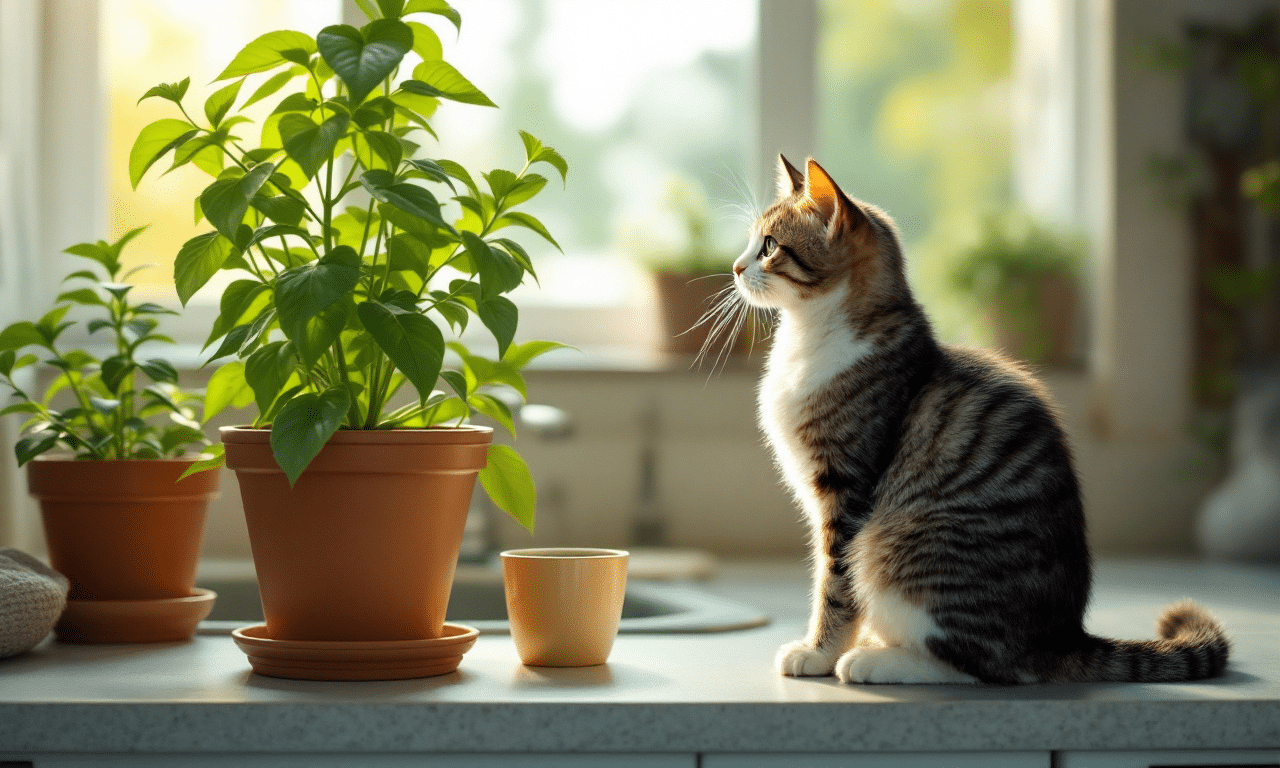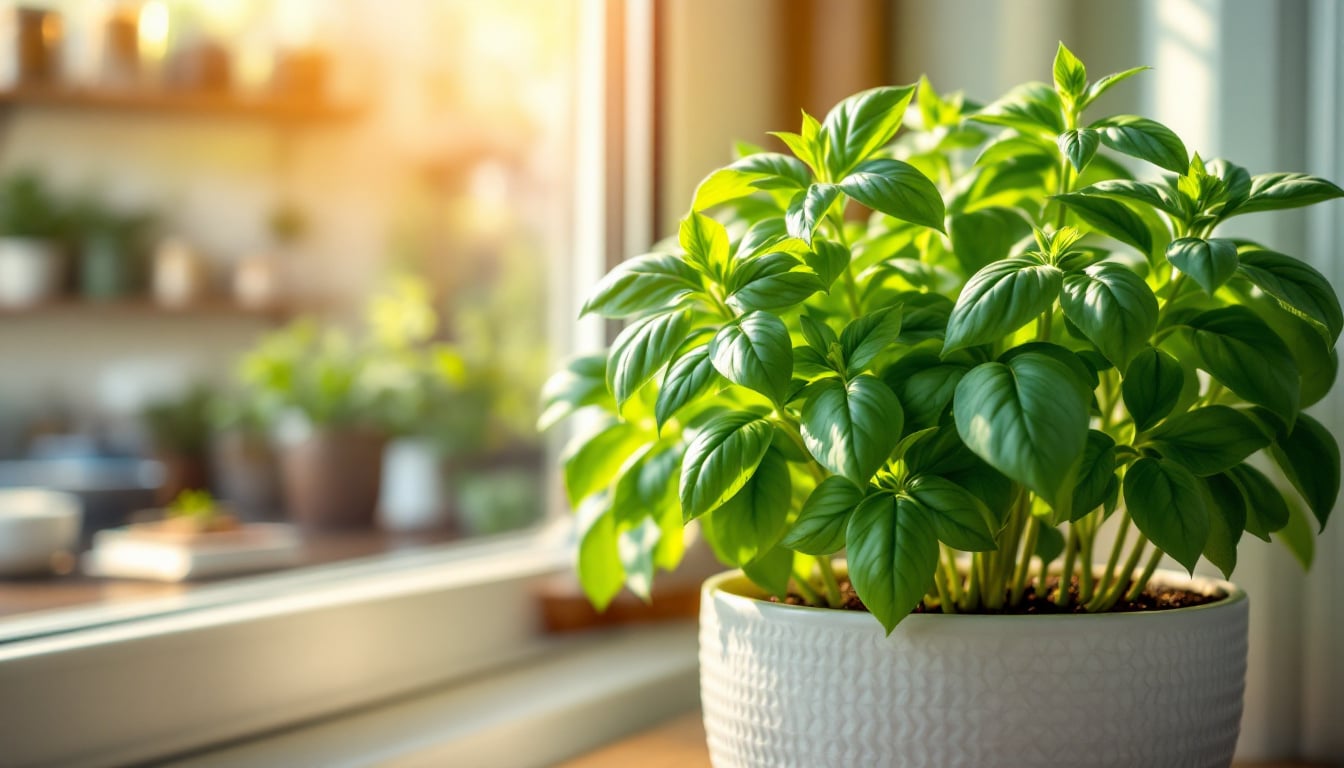Catnip, or Nepeta cataria, is not just a delightful indulgence for our furry friends; it offers a fascinating glimpse into feline behaviour and health. This herb, renowned for its euphoric effect on approximately 70-80% of cats, contains the compound nepetalactone, which can lead to playful antics or even calming effects. Beyond entertainment, growing catnip can be a rewarding venture for gardeners, attracting beneficial pollinators and promoting eco-friendly practices. As research continues to uncover its myriad benefits—from aiding digestion to potential therapeutic applications—this charming plant proves that there’s much more than meets the eye when it comes to our beloved pets’ favourite herb.
Highlights: Discover the Fascinating World of Catnip
- 🌿 Catnip, or Nepeta cataria, is more than just a cat’s plaything; it contains a compound that triggers euphoric responses in 70-80% of felines!
- 🌱 With its easy-to-grow nature, catnip is a perfect choice for gardeners at any skill level, thriving in full sun and producing beautiful lavender flowers.
- 🐾 Beyond fun, this herb may assist with digestion and can even act as a natural insect repellent—keeping your furry friend healthy and pest-free.
- 🍵 But catnip isn’t just for cats! Dried leaves can be infused into calming herbal teas or even incorporated into culinary dishes for added flavour.
- 🐝 As an eco-friendly gardening choice, catnip helps diminish the need for chemical pesticides while attracting beneficial insects—nature’s own pest control!
- ☀️ Understanding its seasonal growth patterns can help gardeners maximise their yield, ensuring lush plants ready for feline enjoyment come spring.
- ⚠️ It’s important to note that not all cats respond to catnip due to genetic differences; moderation is crucial to prevent overstimulation!
- 🔍 Exciting research is being conducted on the therapeutic potential of catnip, exploring how it might one day aid in veterinary care beyond mere entertainment.
Did you know that catnip was once used as a medicinal herb in ancient cultures? It was believed to have calming effects on humans, similar to its impact on cats today!
The Science Behind Catnip
Catnip, scientifically known as Nepeta cataria, is a herbaceous plant that belongs to the mint family. Its most notable feature is a compound called nepetalactone, found in the leaves and stems. This substance interacts with feline receptors, triggering a euphoric response in about 70-80% of cats. The reaction can vary from rolling and rubbing to playful antics or even mild sedation. Interestingly, the effect lasts for approximately 10 to 15 minutes before cats become temporarily desensitised—what’s often referred to as ‘the catnip high.’ Understanding this unique interaction not only enhances our knowledge of feline behaviour but also illuminates the fascinating biology behind this beloved herb.
Growing Catnip: A Gardener’s Delight
For those interested in cultivating their own catnip, it’s a relatively straightforward endeavour. Catnip thrives in well-drained soil and prefers full sun, making it an ideal choice for both novice and experienced gardeners. The plant can grow up to three feet tall and produces lovely lavender flowers that not only attract felines but also pollinators like bees and butterflies. Whether you choose to grow it indoors in pots or outdoors in gardens, regular pruning encourages bushier growth and more prolific flowering. Harvesting leaves just before blooming ensures maximum potency of nepetalactone, providing your furry friend with an exhilarating experience.
The unexpected ways a tiered spice rack can revolutionize your home organization (hint: it’s not just for spices)
Health Benefits of Catnip for Cats
Beyond simply providing entertainment, catnip also offers several health benefits for our feline companions. The herb has been noted for its ability to aid digestion, acting as a natural remedy for mild stomach upset. Additionally, some studies suggest that catnip may have insect-repelling properties; rubbing fresh catnip on your pet’s collar can help deter fleas and mosquitoes without using harsh chemicals. Furthermore, the stimulating effects of catnip can encourage exercise and play, crucial components for maintaining a healthy weight and overall well-being in indoor cats.
Creative Uses Beyond Feline Fun
While many pet owners are familiar with using catnip as a treat or toy filler for their cats, its applications extend far beyond mere amusement. For plant lovers, dried catnip makes an excellent addition to herbal teas—its calming properties can soothe anxiety and promote relaxation in humans too. Some enthusiasts even use the leaves in cooking, adding them to salads or as flavouring for meats. It’s worth noting that while the effects on humans are milder compared to those experienced by cats, they can still enjoy the herb’s aromatic qualities.
Catnip’s Role in Eco-Friendly Gardening
As environmental concerns continue to rise among gardeners and cat owners alike, incorporating catnip into an eco-friendly garden offers numerous advantages. The plant is resilient against pests and disease due to its potent oils. This means less reliance on chemical pesticides—a boon for biodiversity within your garden ecosystem. Additionally, planting catnip can attract beneficial insects while deterring harmful ones, making it a valuable addition to organic gardening practices.
The Seasonal Cycle of Catnip
Understanding the seasonal cycle of catnip is essential for both gardeners and pet owners who want to maximise their plants’ potential benefits. Generally speaking, catnip thrives during warmer months but goes dormant in colder seasons. During this time, it’s best to cut back any dead stems to encourage new growth come springtime. For indoor growers, providing adequate light conditions mimicking natural sunlight can prolong the life cycle of your plants throughout winter months.
Cautions: Not All Cats Respond Alike
It’s vital for pet owners to remember that not all felines react similarly to catnip; sensitivity varies significantly among individuals due largely to genetics. Kittens younger than six months may not exhibit any reaction at all until they mature. Moreover, overexposure can lead some cats into a state of agitation instead of relaxation—moderation is key when introducing this herb into their lives.
The Future of Catnip Research
As researchers continue unraveling the complexities surrounding nepetalactone’s effects on feline behaviour and health, exciting discoveries await us at every turn. Ongoing studies aim at exploring potential therapeutic uses beyond recreational enjoyment—such as anxiety relief during vet visits or integrating extracts into pet medication regimens—highlighting how this humble herb could play an integral role in future veterinary care.
FAQ: Your Catnip Questions Answered
1. Can all cats enjoy catnip?
While around 70-80% of cats respond to catnip, some may not exhibit any reaction due to genetic factors. Kittens younger than six months are also less likely to react, so patience is key!
2. Is catnip safe for my cat?
Yes, catnip is generally safe for cats when used in moderation. However, overexposure can lead to agitation rather than relaxation, so it’s best to offer it as a treat rather than an everyday staple.
3. How can I grow catnip at home?
Catnip is easy to grow! It prefers well-drained soil and full sun. Regular pruning encourages bushier plants and more flowers, while harvesting before blooming maximises its potency.
4. Are there any benefits of catnip for humans?
Absolutely! Dried catnip can be brewed into herbal teas that promote relaxation and may even be used in cooking for added flavour. Its calming properties extend beyond just our feline friends.
The Allure of Catnip Awaits
The world of catnip is a captivating journey that goes well beyond mere playtime; it opens doors to understanding our feline companions and the natural world around us. With ongoing research and creative uses blossoming every day, there’s much more to discover about this enchanting herb. Stay tuned for more insights and tips on how to enrich your pet’s life and your gardening experience!





